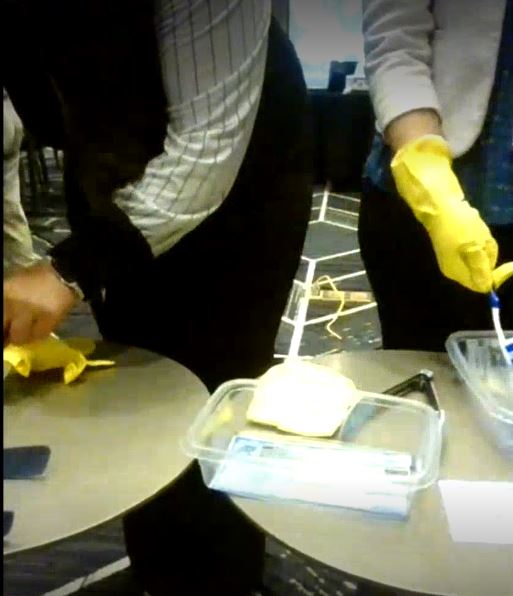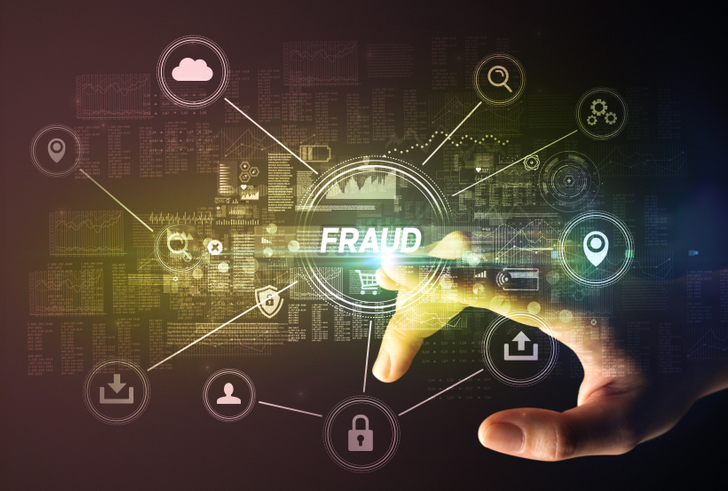Check Washing Experiment: Putting Gel Ink Pens to the Test
- "Check washers" remove original written info from checks to create forgeries
- Demand for these checks has led to thefts and assaults
- Gel pens have been touted as "wash-resistant"
A few weeks ago we explored the utility of gel ink pens as shields against check fraud. A WSAW-7 consumer alert cited gel pens as a simple way to make "washing more difficult or even impossible."
We also noted in our post that utilizing gel ink pens is not enough on its own to prevent check fraud. Fraudsters can, of course, still create counterfeits using information from the check via software like Photoshop -- once output on a simple desktop printer, they can be deposited via mRDC to a "drop account."
Recently, YouTuber Robb's Homemade Life examined gel pens and their effectiveness, testing Uniball, Pilot G2, and standard "click" ball point pens against an array of four commonly used solutions that fraudsters deploy when attempting to wash checks. (Robb responsibly did not reveal the solutions used -- except to note that they are "all available at Walgreens-Mart or Home Depot."). Remember that gel pens are building a reputation as very effective against washing.
Check Washing Tests & Results
Long story short, the goal is to erase the material written in ink on the check -- amount, date, signature, "pay to the order of..." -- in order to rewrite the check to disburse cash to the scammer. Robb explains that many banks fight check washers by printing checks using inks that degrade when exposed to the chemicals commonly used for "washing" (also known as security checks), which renders the check useless after being treated. Unfortunately, not all checks are produced that way -- particular since individuals and businesses purchase their checks through a variety of vendors from Hardland Clarke to Walmart.
The Pilot-G2 -- touted previously as the "go-to" gel pen -- was actually very effectively washed by "Solution B" and faded under "Solution A." The standard "click" ball point faded under two solutions, but the Uniball pens' ink didn't budge in reaction to any of the chemicals, making it the "winner."
It appears that it's not as simple as "use a gel pen." For persons who find themselves regularly writing checks, it is obviously worthwhile to make UniBall Signo 207 pens a priority purchase.
However, washing checks involves more than just the solution. The content creator failed to recognize that check washers do not stop at a simple soak -- fraudsters will utilize other materials such as toothbrushes to gently scrub the ink off. And, while it may slightly damage the background of the check, deposits via mRDC make it difficult for banks to identify the issue as the images of checks are converted to black and white for processing and review.
This very experiment was carried out during the recent OrboGraph Check Fraud Roundtable. Attendees were provided the materials -- real checks written with a variety of pens/inks, solutions, and other materials like tooth brushes -- and attempted to wash checks. The results were similar to Robb's Homemade Life in that the gel ink pens performed better. However, the group noted that with a bit of "elbow grease," they were able to scrub the ink off the check with minimal damage that could easily pass through a mRDC system.

Source: OrboGraph Check Fraud Roundtable.
Technology Combined with Gel Ink Pens
As noted in our previous article reviewing gel ink pens, individuals and businesses should be using gel ink pens when writing checks. This, however, is just one tool to stop fraudsters. Individuals and business should also, for example, follow USPS recommendations to drop off envelopes containing checks directly at the post office.
In addition, financial institutions need to leverage artificial intelligence and machine learning technologies for check fraud detection. Once a check has been deposited, the transaction should be processed through a behavioral analytics system to identify anomalous behaviors. The image of the check needs to be analyzed with image forensic AI to detect counterfeits, alterations, and forgeries.

The ultimate goal, of course, is to increase detections and reduce losses. By making it more difficult for fraudsters to be successful -- whether by using gel ink pens or deploying technology thwarting extraction of funds -- checks become a much less-favored target.